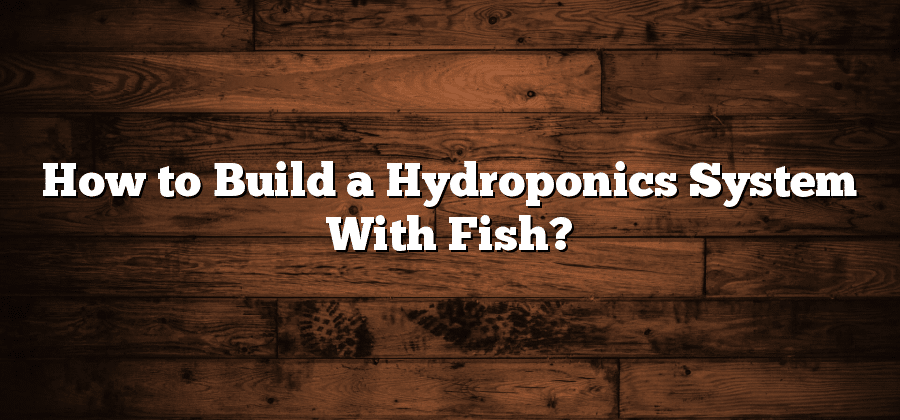Understanding the Basics of Hydroponics
Hydroponics is a revolutionary agricultural method that has gained popularity in recent years. Unlike traditional soil-based farming, hydroponics involves growing plants in a nutrient-rich water solution without the use of soil. By providing plants with a precise balance of water, nutrients, and oxygen, hydroponics allows for improved growth and greater control over plant health.
One of the primary benefits of hydroponics is its ability to maximize space efficiency. With traditional farming, a significant amount of land is required to cultivate crops. However, hydroponics eliminates the need for large plots of land, making it an ideal choice for urban environments or areas with limited available space. Additionally, the controlled environment of hydroponics eliminates the risk of pests and diseases, reducing the need for harmful pesticides or insecticides. Ultimately, hydroponics offers a sustainable and environmentally-friendly method of growing crops that can be practiced anywhere in the world.
The Benefits of Incorporating Fish into Hydroponic Systems
One of the many benefits of incorporating fish into hydroponic systems is the symbiotic relationship that can be formed between the plants and the fish. In this type of system, the fish waste serves as a rich source of nutrients for the plants. As the fish excrete waste, it is broken down by bacteria into nitrates, which are then absorbed by the plants as a fertilizer. This eliminates the need for traditional soil-based fertilizers and allows for a more sustainable and eco-friendly approach to gardening.
Another advantage of incorporating fish into hydroponic systems is the increased productivity and growth rates of the plants. The fish waste provides a consistent and readily available supply of nutrients, which allows the plants to thrive and grow at a faster rate. This means that you can enjoy a higher yield of crops and a shorter time to harvest. Additionally, the constant flow of water in a hydroponic system helps to deliver nutrients directly to the roots of the plants, ensuring optimal absorption and maximizing their growth potential.
Selecting the Right Fish Species for Your System
Selecting the right fish species for your hydroponic system is a crucial step in ensuring its success. The choice of fish will depend on various factors such as the size of your system, the desired yield, and the specific needs of the fish.
One important consideration is the temperature requirements of the fish species. Some fish thrive in warmer water, while others prefer cooler temperatures. It is essential to select fish that can tolerate and thrive within the temperature range of your hydroponic system. Additionally, you should also consider the size and growth rate of the fish. Different species have varying sizes and growth rates, so it is important to choose fish that are suitable for your system’s capacity and optimal harvesting timeline. Taking into account these factors will help ensure a productive and sustainable integration of fish into your hydroponic setup.
Choosing the Ideal Hydroponic Setup for Fish Integration
When choosing the ideal hydroponic setup for fish integration, there are several factors that need to be considered. Firstly, the size of the system is crucial. It is important to select a setup that can accommodate the number and size of fish that you plan to have in your hydroponics system. This ensures that the fish have enough space to swim and grow comfortably, promoting their health and overall well-being.
Secondly, the type of hydroponic system plays a vital role in fish integration. Different systems utilize different methods to deliver nutrients to the plants. For example, a nutrient film technique (NFT) system circulates a shallow film of water containing nutrients over the plant roots, while a deep water culture (DWC) system submerges the roots in a nutrient-rich solution. It is crucial to select a system that provides adequate oxygenation and filtration for the fish, as well as efficient nutrient delivery for the plants. This ensures a symbiotic relationship between the fish and plants, where the fish provide nutrients for the plants, and the plants filter and purify the water for the fish.
Building the Foundation of Your Hydroponics System
Hydroponics systems provide a unique and efficient way to grow plants without the use of soil. However, in order to successfully implement a hydroponics system, it is crucial to build a solid foundation. This foundation refers to the physical structures and components that support and maintain the system, ensuring optimal growth and productivity.
One key element of a hydroponics system’s foundation is the selection of the appropriate growing medium. Unlike traditional soil-based gardening, hydroponics relies on different materials such as perlite, vermiculite, coconut coir, or even nutrient-rich water solutions to provide stability and proper nutrition to the plants. It is essential to choose a growing medium that best suits the plants being cultivated, as well as their growth stage and the specific needs of the hydroponics system. Additionally, the foundation must include a reliable water supply and a well-designed irrigation system to ensure that the plants receive adequate hydration and essential nutrients throughout their growth cycle. This includes the installation of pumps, pipes, and timers, which are crucial in maintaining a consistent and controlled environment for the plants. By building a strong foundation for your hydroponics system, you can create the perfect conditions for healthy and thriving plants.






